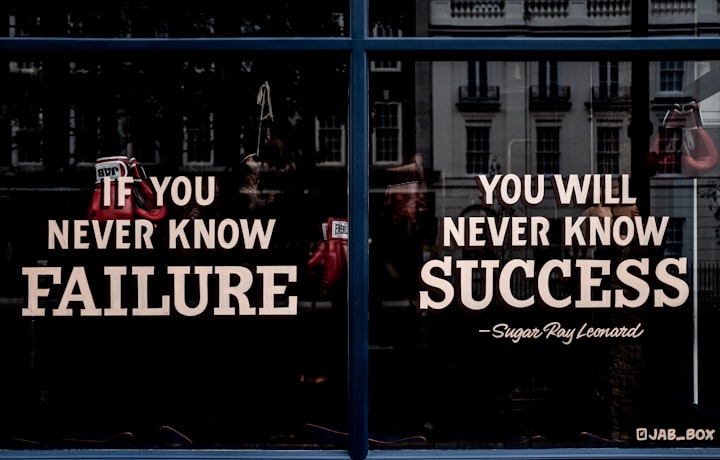The Future of Email Marketing: What Successful E-Commerce Brands Are Doing Right
Today’s email marketing is a lot more complicated than that of the past. Let’s review why email marketing is so essential to building brand affinity and scaling effectively.

Believe it or not, email marketing has been around since 1978—when Gary Theurk sent an email to 400 companies to promote his company’s (Digital Equipment Corporation) products.
But it wasn’t until email became available for widespread public use in the 1990s that email marketing took off. Brands saw the value of email as a direct marketing method—a lot like direct mail.
Since then, email marketing has become an integral part of most business’ marketing strategies. Today’s email marketing is a lot more complicated than that of the past, and it will only become more sophisticated in the future.
Before we cover these strategies and tactics, let’s review why email marketing is so essential to building brand affinity and scaling effectively.
Why is Email Marketing Important?

Email is one of the most lucrative forms of marketing, bringing you an average of $38 for every $1 you spend on it. This is because of email’s personal, targeted nature.
First of all, if someone is on your email list, they are interested in hearing what you have to say and seeing your products. They’re warmer than pure cold traffic.
Also, email is more personal. People consider their email private, unlike social media, where everyone can see what they write. As a result, you can have a conversation with the customer. It’s not too uncommon for customers to reply to well-crafted marketing emails with “wow, this is me!” or something similar, even if they’d never say so in public.
Email marketing is also scalable. You can send the same message to 1 person or 10,000—it all depends on your list size. Plus, most email marketing software programs charge you for having a certain amount of subscribers. You only pay more as your business grows.
The Future of E-Commerce Email Marketing
1. Plain Text Emails
One trend that is seeing some success is the use of plain text marketing emails.
This involves little to no graphics or logos in the email. Instead, the focus is on compelling storytelling and informative content. See, today’s marketing emails are often nothing but daily “sales” emails offering big discounts. Customers get desensitized and even annoyed with these in some cases, especially in e-commerce.
Plain text emails are designed to look like a message from a friend or acquaintance. The reader is immediately intrigued by the subject line, opening the email, and hopefully clicking through. It may seem counterintuitive that someone would read a boring-looking plain text email, but many people simply screen out “salesy”-looking emails.
A plain text email marketing strategy can work quite well for smaller e-commerce brands that want to build rapport with their audience. By delivering consistent, quality email content that sells reasonably often, you’ll be able to maintain a decent list of customers who enjoy buying from you.
With that in mind, some brands find that using images and their logo works well too. It’s worth trying some plain text emails, but if HTML emails work for you, then no need to quit them.
2. Mobile-First

M-commerce is quickly becoming an essential factor for email marketing. Many more people check email on their smartphones than they do on their computers, yet open rates tend to be lower.
Consequently, optimizing emails for mobile is imperative to selling more through your email list. That means optimizing a few things:
- Subject line: The subject line needs to be powerful, as the customer will have to move from push notification to inbox.
- Copy: Copy should be as short as possible, yet impactful and persuasive. Avoid creating large blocks of text, as the reader can lose interest.
- Images: Don’t rely on them too much, as some email apps may not be able to show them.
- Design: Make your email design and layout more friendly for rendering on mobile.
3. Automation
Automation is a key part of scaling, so it pairs well with email marketing. Nowadays, many email marketing software programs offer an unending list of ways to get the right email message to the right person at the right time. They do this in two ways.
- Segmentation: This is splitting your audience up based on certain factors. For example, you might segment email subscribers based on how much they’ve spent with you, then send your top spenders special rewards.
- Triggers: You can set certain emails to send when a customer does something. For example, when a customer buys, you send them a personal-sounding thank-you email.
One of the best ways to do this is with an automated email sequence. You write an automated email once for a specific purpose, deploy it, and then your customers run through the workflow. There is no extra work on your part. Think of them as unpaid salespeople that work 24/7.
A typical example is a welcome series sequence. Someone arrives on your site and gives you their email in exchange for your downloadable eBook. Instead of writing to each new person manually, perhaps you set up a 5-day autoresponder that introduces customers to your brand and sells them on your product.
There are plenty of other email automations that can pay off, especially for e-commerce businesses.
- New Customer Thank You
- Abandoned Cart Sequences
- Thank-you/Confirmation Emails
- Customer Win-Back
- Upsell/Cross-sell Sequences
4. User-Generated Content (UGC) and Reviews
You might have the best product and the strongest copy in the world, but a customer often has to hear what another customer thinks about your product (or see how they use it) before buying.
Consequently, user-generated content is becoming more popular in email. Gaining UGC could be as simple as sending an email asking for testimonials. Video is preferable, but written testimonials work as well.
Most people trust testimonials as much as they trust friends and family, and they’ll spend more at businesses with excellent reviews/testimonials. When your customer sees people like them using your product to great success, they’ll be driven to buy. Once you collect testimonials, you can use them in emails.
Another idea would be to have a photo contest of people using your product. They send you their photos, and then you send out an email blast with the winners.
5. Interactivity

Interactivity in email adds a bit of fun to the email while getting your customer involved. Adding interactivity can make your customer more likely to open the email, engage with its contents, and even click through to your landing page.
Some ways to add interactivity to your emails include the following.
- Quizzes
- Surveys
- Product carousels
- Animated CTA buttons
That said, make sure that not all interactivity guides the user immediately away from the email. It’s harder to navigate apps and web browsers on a mobile device, so try to keep some interactive elements from directing users to another page.
Rule Your Customer’s Inbox With These Email Marketing Tips
Email will continue to be a critical marketing channel for e-commerce businesses due to its personal nature. However, the tactics are becoming more advanced.
Brands will have to take a mobile-first approach to survive (something that plain-text email lends itself to). Automation will help brands increase ROI and scale, while at the same time, personalization will be vital to building a long-standing connection with your audience. Be sure to keep on top of these email marketing trends to continue growing.
Seller’s Choice and our team of digital marketing experts are experienced and knowledgeable in the quickly changing e-commerce industry. We keep our ears to the ground, making sure our clients employ the very best and latest digital marketing trends. If you’re looking to scale your business, and you don’t have the time or resources to stay on top of all things e-commerce, Seller’s Choice might be just the full-service marketing solutions provider you’re looking for.
Get in touch to learn more about who we are, what we value, and how our many services can be integral to effectively scaling your business.
About the Creator
Seller's Choice
Seller’s Choice is a digital marketing solution provider dedicated to the interests, growth, and profitability of e-commerce brands.






Comments
There are no comments for this story
Be the first to respond and start the conversation.